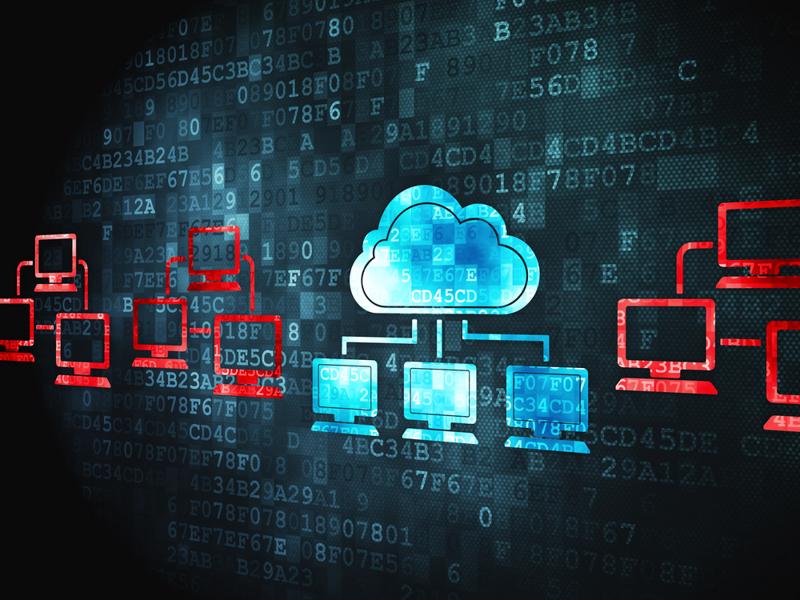The potential of Project Kinect for Azure
When Microsoft first debuted its Kinect hardware in 2010, the product had nothing to do with edge computing, AI or machine learning. The Kinect served as a controller interface for Microsoft's Xbox 360 video game console. (Later versions were released for Windows PC and Xbox One.) Using cameras and sensors, it registered a player's body movements and inputted these gestures as controls. While it was innovative, Kinect struggled to gain a footing.
Despite going through various upgrades, it was fully discontinued as a consumer project in 2017. However, Microsoft did not fully abandon its Kinect hardware. At this year's Build developer's conference the company revealed a new use for its one-time video game accessory: edge computing.
Specifically, the new Kinect project factors into the greater themes of Build 2018, namely combining cognitive computing, AI and edge computing.
"Microsoft has ambitious plans to bring its Cognitive Services software to Azure IoT Edge."
Microsoft at Build 2018
Edge computing is at the forefront of technological innovation. Capitalizing on the internet of things, this method of data processing de-emphasizes a central hub. Remote sensors receive computer processing power to analyze the data near its source before sending it back, greatly reducing bandwidth needs. This system is also more dependable because the sensors store the data, at least for a limited time span. Network outages or dropped connections won't result in lost or fragmented information.
However, these sensors are, at the moment, fairly basic equipment. Microsoft aims to change that. At Build 2018, the company announced ambitious plans to bring its Cognitive Services software to its edge computing solution, Azure IoT Edge. According to TechCrunch, the first of these programs will be the Custom Vision service.
Implementation of this software with Azure IoT Edge can allow unmanned aerial vehicles, such as drones, to perform more complex tasks without direct control from a central data source. It will give these devices the ability to "see" and understand the environment around them, analyzing new visual data streams. This technology can also be used to improve advanced robotics, autonomous vehicles and industrial machines.
This advanced method of machine learning can increase productivity because all of these devices will be able to continue to perform complicated, vision-based tasks even with network connection disruptions.
Microsoft has also partnered with Qualcomm to bring cognitive vision developer's tools to devices like home assistants, security cameras and other smart devices.
However, this technology, Qualcomm and its Custom Vision service, while useful only work with devices equipped with sensors and cameras that can process visual data. To increase the variety of edge sensors that can benefit from these new tools and software services, Microsoft resurrected the Kinect.

The power of the Kinect
In an introduction on LinkedIn, Microsoft Technical Fellow Alex Kipman discussed Project Kinect for Azure. In his piece, Kipman outlined the company's reasoning for opting to return to the commercial failure. First, Kinect has a number of impressive features that make it ideal as a sensor.
These benefits include its 1024×1024 megapixel resolution, which is the highest among any sensor camera. Kinect also comes with a global shutter that will help the device record accurately when in sunlight. Its cameras capture images with automatic per pixel gain selection. This functionality allows the Kinect to capture objects at various ranges cleanly and without distortion. It features multiphase depth calculation to further improve its image accuracy, even when dealing with power supply variation and the presence of lasers. Lastly, the Kinect is a low-power piece of hardware thanks to its high modulation frequency and contrast.
Utilizing the Kinect sensors for cognitive computing makes sense. When looking at the product history, Microsoft had already developed more than half the specifications needed to create an effective sensor. The Kinect was designed to track and process human movement, differentiate users from animals or spectators in the room and operate in numerous real-world settings. It was also made to endure drops and other household accidents. Essentially, the Kinect was a hardy specialized sensor interface a market where it had to compete with precise button pressing.
In an industrial space, Kinect can fair far better. Augmenting existing data collection sensors with this visual aid will increase the amount of actionable data that is recorded. The Kinect brings with it a set of "eyes" for any machine. This advantage will let developers and engineers get creative as they seek to create the advanced edge computing networks of the future.
Is a hybrid cloud solution right for your company?
Over the last decade, many companies have been shifting IT responsibilities to the cloud, a solution that allows various users and hardware to share data over vast distances. Cloud programs frequently take the form of infrastructure as a service. A company that can't afford in-house servers or a full-sized IT team can use cloud solutions to replace these hardware and personnel limitations.
Large companies like Amazon, Microsoft and Google are all behind cloud services, propelling the space forward and innovating constantly. However, there are still limitations when it comes to cloud adoption. For as convenient as theses services are, they are designed for ubiquitous usage. Organizations that specialize in certain tasks may find a cloud solution limited in its capabilities.
Those businesses wishing to support service-oriented architecture may wish to consider a hybrid cloud solution, a new service becoming widespread throughout various enterprise application. As its name suggests, a hybrid cloud solution combines the power of a third-party cloud provider with the versatility of in-house software. While this sounds like an all-around positive, these solutions are not for every organization.
"Before businesses discuss a hybrid solution, they need three separate components."
Why technical prowess matters for hybrid cloud adoption
TechTarget listed three essentials for any company attempting to implement a hybrid cloud solution. Organizations must:
- Have on-premise private cloud hardware, including servers, or else a signed agreement with a private cloud provider.
- Support a strong and stable wide area network connection.
- Have purchased an agreement with a public cloud platform such as AWS, Azure or Google Cloud.
Essentially, before businesses can discuss a hybrid solution, they need all the separate components. An office with its own server room will still struggle with a hybrid cloud solution if its WAN cannot reliably link the private system with the third party cloud provider. And here is the crutch. Companies without skilled IT staffs need to think long and hard about what that connection would entail.
Compatibility is a crucial issue. Businesses can have the most sophisticated, tailored in-house cloud solution in the world but, if it doesn't work with the desired third party cloud software, the application will be next to useless. It isn't just a matter of software. Before a hybrid cloud solution can be considered feasible, equipment like servers, load balancers and a local area network all need to be examined to see how well they will function with the proposed solution.
After this preparation is complete, organizations will need to create a hypervisor to maintain virtual machine functionality. Once this is accomplished, a private cloud software layer will be needed to empower many essential cloud capabilities. Then the whole interface will need to be reworked with the average user in mind to create a seamless experience.
In short: in-house, skilled IT staff are essential to successfully utilizing a hybrid cloud solution. If businesses doubt the capabilities of any department, or question whether they have enough personnel to begin with, it may be better to hold off on hybrid cloud adoption.
Without being properly installed, a poorly implemented solution could cause delays, lost data and, worse of all, potentially disastrous network data breaches.

The potential benefits of the hybrid cloud
However, if created the right way, a hybrid cloud solution brings a wide array of advantages to many enterprises, particularly those working with big data. According to the Harvard Business Review, hybrid cloud platforms can bring the best of both solutions, including unified visibility into resource utilization. This improved overview will empower companies to track precisely which employees are using what and for how long. Workload analysis reports and cost optimization will ultimately be improved as organizations can better direct internal resources and prioritize workers with stronger performances.
Overall platform features and computing needs will also be fully visible, allowing businesses to scale with greater flexibility. This is especially helpful for enterprises that see "rush periods" near the end of quarter/year. As the need rises, the solution can flex right along with it.
Hybrid cloud services are also easier to manage. If implemented properly, IT teams can harmonize the two infrastructures into one consistent interface. This will mean that employees only need to become familiar with one system, rather than learning different apps individually.
Companies processing big data can segment processing needs, according to the TechTarget report. Information like accumulated sales, test and business data can be retained privately while the third party solution runs analytical models, which can scale larger data collections without compromising in-office network performance.
As The Practical Guide to Hybrid Cloud Computing noted, this type of solution allows businesses to tailor their capabilities and services in a way that directly aligns with desired company objectives, all while ensuring that such goals remain within budget.
Organizations with skilled, fully formed IT teams should consider hybrid cloud solutions. While not every agency needs this specialized, flexible data infrastructure, many businesses stand ready to reap considerable rewards from the hybrid cloud.
Exploring the true value of a CISO
As cybersecurity issues become more prevalent, one position within the corporate ladder is gaining new attention: the chief information security officer. The financial burden of data breaches continues to rise. One recent report from Accenture stated that the average global cost of cybercime reached $11.7 million in 2017. This was a 27.4 percent raise from $9.5 million in 2016.
Along with the rising expenses of cyberattacks, companies have been spending more on protection, primarily on CISOs. Security Current data indicated that the overall average salary for an CISO was $273,033 by end of 2016 and this number is only expected to have increased. As organizations continue to pay more for CISO expertise, the question becomes: What value do CISOs truly bring to the organizations they serve?
Distilling decision-making to one person
Cybercriminals have certain inherent advantages over the companies they target. For one, their anonymity. Hackers typically research an organization's staff as this aids with spear phishing and other data breach initiatives. By contrast, businesses have no certainty they're even being targeted until they've been attacked.
Another crucial advantage on the side of hackers is that many corporations, especially those small- to medium-sized businesses, don't have CISOs. This means that all cybersecurity policies and initiatives must go through the IT department or other group. When a chief technology officer has to deal with cybersecurity on top of other duties, the initiatives can be slowed, in some cases encountering month-long delays or more.
Cybercriminals are constantly adapting and incorporating new malicious software into their arsenals. In order to keep pace with this rapid innovation, one person within the organization must function as the hacker's opposite, keeping the company cybersecurity policies fluid and responsive. As Helpnet Security pointed, CISOs must not only be leaders but also serve as the link between innovation and defense. A single, dedicated person can do this much more effectively than a distracted team.

Presenting a single, unified cybersecurity vision
Likewise, a C-level executive is typically the only class of employee capable of making real, impactful decisions within a corporate structure. Unfortunately, many executives and decision-makers remain uneducated about issues of cybersecurity. A BAE Systems survey found only 42 percent of executives felt they were very or extremely knowledgeable about their company's cybersecurity policies.
In order to create comprehensive, overarching information security standards, businesses need a respected voice in the room who can articulate and educate other executives on the need for cybersecurity initiatives. CISOs have this presence and, unlike CTOs, they are not hindered by distractions that can occur in other business segments.
"Think in terms of 'when' instead of 'if.'"
Creating and updating corporate response strategy
Experts agree that companies that develop cyberattack response strategies minimize losses and more quickly seal breach points. While it is nice to hope that your organization will never be affected, the far more prudent strategy is to think in terms of "when" instead of "if." When a cyberattack occurs, organizations must have a clear, itemized response plan.
According to Risk Management, the best plans are proactive; changing biannually or even quarterly to adapt to new methods of cyberattack. A comprehensive plan includes steps like workforce education, breach detection tools, consumer alerts and legal recourse tools.
Once a data incursion occurs, the CISO and his or her team must be able to detect it immediately. With cyberattacks, the longer they go unnoticed, the worse they are. Placing a CISO in charge of maintaining and updating this response plan will ensure that it gets done and comes from a point of clear authority.
When a data breach occurs, the last thing that decision-makers want or need is to be arguing about what to do and who should do it.
Allowing the IT team to focus
IT teams within companies are frequently overburdened. In addition to maintaining and updating company software, IT personnel regularly respond to the daily crises of other employees. Every hardware, email or other type of problem distracts IT groups from performing their primary duties.
While typical employees tend not to notice whether or not an operating system is updated, it is these performance checks that ultimately help keep company networks safe from unauthorized access.
Bringing in a CISO allows the IT group more time to focus on their core responsibilities. The CISO may even operate alongside regular IT staff during certain times, however, it is best not to overlap duties too much. CISOs can handle red flags, such as phishing emails and imbedded malware that may otherwise escape detection or occupy IT manpower.
CISOs don't need to be paid a quarter million dollars a year to be valuable. Essentially, they act as a point person in the realm of cybersecurity, a clear head that can dictate commands and formulate strategy. Too often, companies take a relaxed approach to cybersecurity, which almost always results in lost income and damaged reputation.
For organizations that cannot afford to keep a full-time CISO, other options remain. Cloud solutions tend to be more secure than in-office networks and some managed IT providers offer the same level of oversight and proactive planning. Regardless of who or what is in charge of information security, companies must prioritize all compliance and protection development as crucial issues.
How will the GDPR affect your business?
After two years of preparation, the European Union's General Data Protection Regulation is set to go into effect May 25, 2018. Designed to replace the Data Protection Directive of 1995, this legal framework will provide substantial protection for EU citizen's data by imposing heavy fines on any company found to be in violation of the GDPR.
While large companies within the EU have been bracing themselves for impact, many organizations feel unprepared. A report from information security provider Varonis found that 55 percent of businesses worldwide were worried about incurring fines for a GDPR violation. Given that these penalties can be severe – with a maximum fine of €20 million or 4 percent of annual worldwide turnover – organizations may have reason for alarm.
However, arguably the group most at risk are smaller businesses not based in the EU, or companies that don't primarily deal with data. After all, the GDPR is all about regulating data privacy. Yet these organizations may be in the crossfire. Any business that collects data, any amount of it, from an EU citizen or the EU market must fully comply with GDPR standards.
Who needs to comply with the GDPR?
According to the New York University School of Law, any U.S. organization possessing an entity or any kind (person or office) should ascertain if they will be required to follow the new GDPR policy. GDPR standards will apply to all businesses that process any amount of "personal data" from individuals located in, or protected by, the EU.
The definition here of personal data is broad. According to the initiative, personal data is now any information, not just personally identifying information, that relates to a natural person, identified or identifiable. These new standards apply to log-in information, vehicle ID numbers and IP addresses.
"Any operation or set of operations which is performed on personal data or on sets of personal data" will be regulated by the new standard, according to the articles of the GDPR. These broad definitions and regulations have been purposely worded to incorporate not just companies within the EU but global organizations as well. While the GDPR is a Euro-centric law, its implications may create a new global standard of internet data security.

How prepared generally is the U.S.?
Unfortunately, many businesses in the U.S. simply are not sufficiently informed regarding the coming measure. The Varonis report found that U.S. awareness of the GDPR was only at 65 percent, below the overall average of 79 percent. Only 30 percent of U.S. respondents reported being in full compliance with the upcoming laws. Over 10 percent of organizations still didn't know whether the bill would affect them.
When looking at overall measure compliance completion, the majority of U.S. companies affected by the GDPR have re-evaluated data breach detection procedures, as the GDPR mandates that any EU citizen affected by a breach must be notified within 72 hours of its detection. A little less than 60 percent of U.S. organizations have also conducted a comprehensive assessment of personal data stored within their organization.
This procedure is highly recommended for all companies that may even remotely store some sort of personal data from the EU. It is only after such an assessment has been performed that an organization can be sure whether or not it will be affected by the GDPR.
About 7 percent of U.S. businesses had completed no significant measures to comply with the GDPR.
"About 7 percent of U.S. businesses had completed no significant measures to comply with the GDPR."
What does the GDPR mean for data collection?
Personal data collection will become more transparent under GDPR guidelines. Everyone, personally and professionally, is familiar with user agreements, popular on social media sites like Facebook and Google. These documents have been full of dense legalese designed to disguise their intentions and limit consumer knowledge of the websites' activities.
Under the GDPR, these wordy documents will be made illegal, replaced by concise, comprehensible wording that will alert the "data subject" of exactly what information is being taken. The individual will reserve the right to leave said data contract anytime with no negative repercussions allowed. In short, the naive early days are over and the GDPR will arm at least EU consumers will the tools needed to determine what, if any, information they allow to be shared for commercial purposes.
Data protection by design will also be mandated. Companies will have to factor in information security at every stage of data collection software collection, instead of regulating it to outside software or hardware.
How the GDPR will impact overall data collection remains to be seen. However, what is clear now is that many organizations still have work to do before May 25. With such steep penalties for failure to comply, businesses cannot afford to be asleep on this issue, or even to drag their feet. The fundamental nature of information security could well change from this act. Hopefully, it will be for a better, more secure data privacy marketplace.
Data Madness: Exploring the reliability of in-house data vs. cloud servers
Much is made today about choosing the right kind of data storage. When you’re running a team, the last thing you want is for some crucial information to go missing. Such a setback can be disastrous, especially if the data lost was from a survey or customer response. In addition, you have the added anxiety of only hoping the data was lost, not stolen.
As data madness continues, we’re exploring the most secure methods to backup essential data. In today’s article, we’re putting the two most popular solutions under a microscope: in-house servers and cloud data storage. For many companies, success literally hinges on data security. Know the best method and keep your organization running.
How to keep in-house servers running effectively
The longer a server is in operation, the more likely it is to break down. A Statista report found that only 5 percent of servers broke after the first year. By the fourth year, that number had more than doubled. By year seven, nearly 20 percent of servers failed. While the likelihood of a break is still relatively low after seven years, organizations are clearly taking a huge risk. Executives at this hypothetical company might as well tell their employees that there is only an 80 percent chance for productivity each day.
Servers should be continually replaced and upgraded to be effective at securely housing data. However, age is not the only factor that can cause a server to malfunction. RocketIT stressed the need to continuously upgrade server software to keep it protected and compatible with modern systems.
Since servers are gold mines of confidential data, they are the prime targets for any malicious hacker. Keeping servers up to date not only keeps them running smoothly, it also reduces the risk of viruses and malware being able to infiltrate the hardware.
Lastly, if your business opts for servers then it needs a dedicated, maintained space in which to house them. According to Serverscheck, the ideal server room temperature is between 64-80 degrees Fahrenheit with no more than 60 percent humidity. Servers work best with constant conditions so any change could impact device functionality. In addition, if there is a flood or water leakage in the room, then the organization is at serious risk of data loss.
 Servers need dedicated, environmentally-controlled space in order to function at peak levels.
Servers need dedicated, environmentally-controlled space in order to function at peak levels.Choosing the right professional cloud services provider
If your company instead opts for a cloud service provider, it must choose the right provider. There are currently numerous options in the field, with Amazon and Microsoft standing out as the dominant players.
Many cloud service providers use physical servers themselves. Essentially, they handle all the maintenance, storage and cybersecurity responsibilities and charge clients for the operations. While some servers, like Cisco in a recent fiasco, have lost client data, the problem has so far been a rare occurrence, according to The Register.
However, there is another side to cloud data. It can keep existing even when the order is given for deletion, as some celebrities learned in an unfortunate way, according to Wired. If an organization is going to store data through a cloud provider, they should be very careful if and when additional backups are made. Data that survives its intended expiration can be dangerous, especially if the parent company has no idea it exists.
And the most secure data storage method is…
Oxford Dictionaries chronicled the phrase “you can’t have your cake and eat it too” as a way of summarizing that you need to choose only one option. With data storage – you can eat as much of your cake as you want, while still having an infinite supply left over. For companies serious about safeguarding data, the best option is simply both.
Backing up data to multiple sources is one of the best ways to ensure that it is never accidently deleted. Just be sure that every copy is secure, to keep classified information out of malicious hands.
 Storing data in multiple sites ensures that it lasts longer.
Storing data in multiple sites ensures that it lasts longer.Exploring Microsoft’s new partnership with Symantec
Early in February 2018, Microsoft and Symantec announced a partnership, one that allows Symantec to integrate its security solutions with Microsoft Azure and Office 365. The move is an expansion of service alignment, following the October 2017 announcement that Symantec will use the Azure cloud to deliver its Norton consumer-grade cybersecurity software, according to Microsoft.
Both companies have praised the initial move as a win-win. Microsoft gained a valuable vendor and Symantec expanded its potential audience size and improved the delivery system for its products. Evidently, the two organizations enjoyed working with one another, as this latest move represents a definite ramp up in the partnership.
Symantec secures Microsoft’s Cloud
“The collaboration between Microsoft and Symantec brings together advanced network security and intelligent cloud infrastructure… Symantec’s full suite of security and compliance controls complement our broad set of Azure security solutions to provide customers with an ideal, trusted cloud platform,” said Scott Guthrie, executive vice president, Microsoft Cloud and Enterprise Group, during the expanded partnership announcement.
It is easy to see what Microsoft stands to gain from this partnership. Despite the reputation and history of the product, Azure has been playing aggressive catch up to Amazon’s AWS in terms of user base. According to Gartner research, AWS still leads the market in turns of overall usage, especially in the infrastructure-as-a-service sector. While Microsoft is in secure control of second place, the company is likely looking for ways to transform Azure into the superior product.
Since both Azure and AWS market themselves as widely flexible cloud solutions, the clear advantage may come in terms of cybersecurity standards. Symantec has long been seen as a leader in the antivirus and cybersecurity market. Outfitting the Microsoft Azure and Office 365 platforms with Symantec Web Security Service enables corporate Azure and 365 users to better manage cloud data, prevent information leaks and guard against data breaches.
 Cloud services providers are rushing to diversify their solutions to serve a variety of clients. Security measures are still catching up to this design choice.
Cloud services providers are rushing to diversify their solutions to serve a variety of clients. Security measures are still catching up to this design choice.Looking ahead to 2018
Symantec clearly sees the role of cybersecurity providers growing in 2018. The company blog outlined a series of new challenges that it expects to see in the coming year. While 2017 headlines included the dramatic WannaCry ransomware attack, Symantec feels that blockchain – digital record-keeping software made popular through Bitcoin – may headline 2018’s largest cybersecurity concerns. Part of this comes with its wider adoption.
Nokia announced earlier in February that it will use blockchain to power its financial transactions in its new sensing-as-a-service platform and other companies are expected to follow. As blockchain handles increasing amounts of money in the digital space, it is logical to assume the number and intensity of cyberattacks will increase. Symantec expects that cyber criminals will even use artificial intelligence and machine learning to improve their attack methods.
Symantec also expects organizations will struggle with IaaS (the large theater where Microsoft and Amazon are the two main providers). The company feels the flexibility and scalability of these solutions will be the main problem as both will increase the change of errors in implementation and design. This scenario seems likely as not every client using IaaS has an in-house IT team to help facilitate the transition.
Giving Azure and 365 the extra Symantec coverage may be the difference maker in which of the two leading IaaS providers avoids a massive 2018 data breach.
Help Desk Increases Efficiency at John Deere
Industry: Industrial Equipment
John Deere Equipment dealer increases efficiency with Help Desk. As one of John Deere Construction Equipment’s largest dealers, ISG’s first Support Center client provides full sales and product support through 28 locations serving Ohio, Pennsylvania, Iowa, Kansas, Nebraska, and Western Missouri. Along with corporate offices in Wichita, KS, each location has a full complement of equipment and parts inventories, service technicians and field service capabilities. Continued expansion and excellent client service maintains their place as the centerpiece of their long-range planning.
Challenge
The company’s client base comprises a finite set of businesses needing heavy construction equipment. “It is imperative that every one of our client is happy with the service we provide,” states the company’s Assistant Controller. “They are our number one priority. We recruit and hire with client service in mind— not necessarily computing skills. With 16 locations and 700 employees, we needed the support of a full IT staff but lacked the skills internally. Our employees were hired to serve the clients, not service and diagnose daily computer problems. Employees from various locations were calling the corporate office with all of the computer issues. It often took us days to respond and deliver a solution. And, it took managers off task to work through the issues.”
Solution
The company worked with the ISG office in Wichita to implement the ISG support center service across all of their locations. When an employee needs IT support, they call the ISG support center via a personalized toll-free phone number. The number is answered with the company name– as if it was answered within their building. A trouble ticket is entered and the status of each ticket is available through the web. The Support Center handles standard desktop applications, network management issues and a custom John Deere application for all 16 locations. When on-site service is required, ISG will dispatch out a service technician to resolve the problem. Management reports are provided on a monthly basis to assist with decision-making.
Results
- Desktop application support
- Network administration support
- Call logging/categorizing
- Call triage and routing
- Dispatch services
- Call monitoring and escalation
- Call closure and confirmation
- Management reporting
- Client satisfaction survey
“The support center has been a very cost effective solution for delivering quality support to our employees. It provides a single point of contact to manage all of our daily computing issues. Most importantly, it allows us to focus on our core business,” states the company. Support Center delivers quick resolution to end user computing problems.
“With the depth of support that ISG provides and by instituting a consistent process, there is no doubt that problems are solved faster and our employees spend more time serving clients,” states the company. “We are getting more than a help desk, we get the skill of an entire IT staff.”
The benefits of the solution include:
- Reduce IT costs
- Increase end-user service levels
- Focus on core projects
- Eliminate turnover
- Reduce downtime
- Reduce personnel issues
- Save on training and certification expenses
